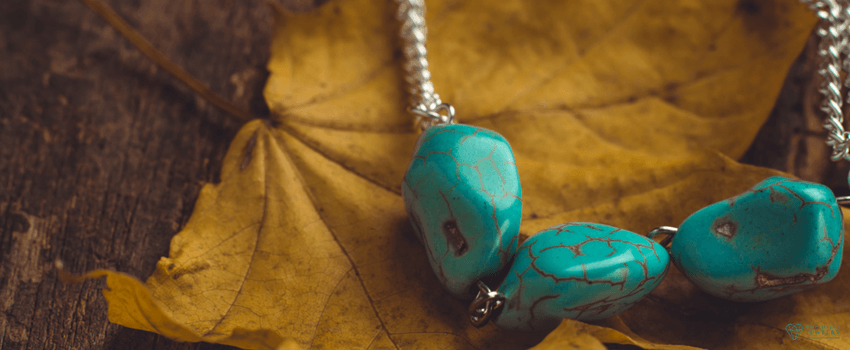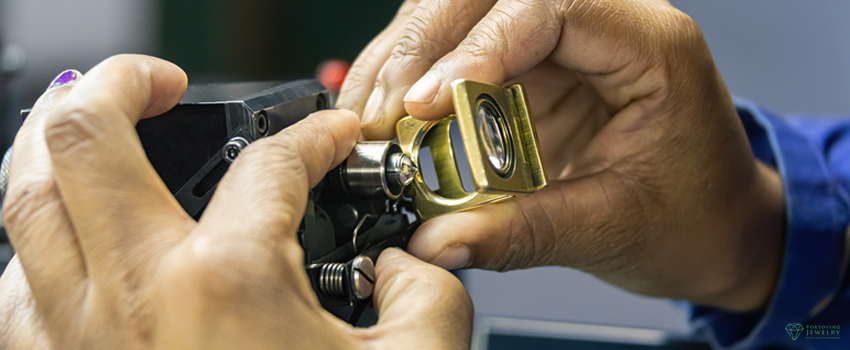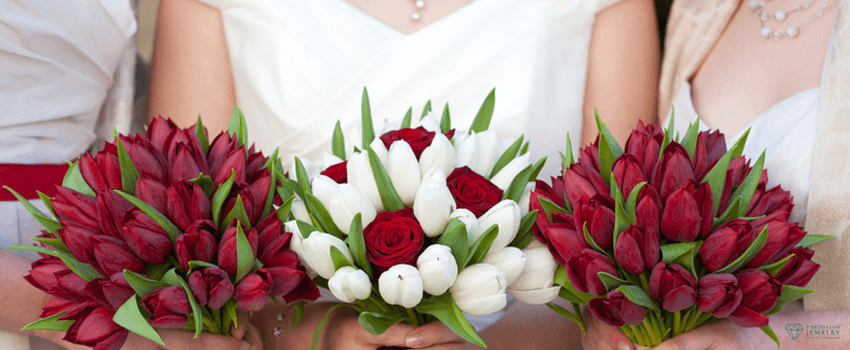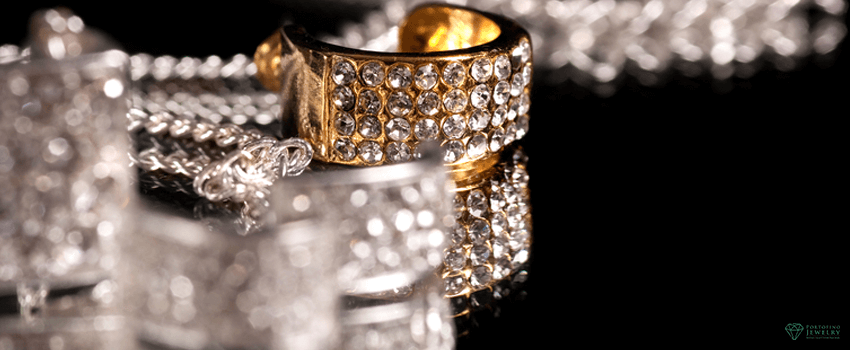Birthstones are precious gems that are associated with a person’s birth month. Generally, each gem has a separate meaning and represents distinct attributes that are thought to belong to the person who wears the jewels. Some months only have one birthstone, whereas others have two and each month’s birthstone has an absorbing backstory dating back through history.
Turquoise is the birthstone for December. It is a beautiful blue-green gemstone with a long and fascinating past, filled with myths and tales. Here is everything you need to know about the turquoise December birthstone:
What Is a Turquoise Birthstone?
Turquoise is an opaque stone that ranges in hue from its namesake brilliant blue to green. It often has a veined appearance due to the remnants of the rock where it originated. These veins might be black, silver, tan, or gold.
Copper aluminum phosphate is the term geologists use to describe turquoise. These copper-bearing minerals are typically found near water tables in semi-humid and dry environments where rock is present. These blue and green crystals are formed when chemicals seep from adjacent rocks through rain and groundwater to make turquoise. Furthermore, copper is the fundamental element for turquoise renowned sky blue hue, while the green color in turquoise is caused by iron.
Turquoise Stone Origin
This December birthstone has been treasured for centuries. Pharaohs and other ancient Egyptian kings ornamented themselves with it, and ancient Chinese artists sculpted with it more than 3,000 years ago.
The turquoise birthstone also plays a significant part in Native American culture. The Pueblo believed that the turquoise hue came from the sky, whereas the Hopi believed the gem was created by lizards crawling across the land. Apache believed turquoise could be located by following a rainbow to its ending. Additionally, they believed that affixing a December birthstone to a bow or firearm improved accuracy.
What Are the 4C’s of Turquoise?
Color
Different shades of blue and green can be found in turquoise. In general, stones with a green tint are less valuable than those with a blue tint; however, this is a matter of personal preference. Notably, the December birthstone color must be uniform and vivid.
Clarity
Clarity refers to the degree of opaqueness. Typically, the higher the level of opaqueness, the higher the value. Turquoise is never transparent like glass but ranges from semi-opaque to opaque.
In addition, a turquoise stone may have a pattern of black, brown, or gold referred to as the matrix. It is a rock fragment containing the turquoise mineral in its natural setting. Although the matrix can make the stone more appealing to some, the most precious stones are transparent.
Cut
Typically, turquoise has a cabochon cut and a smooth, spherical shape with a high polish. This cut highlights the stone’s uniform color and texture exquisitely. Occasionally, you may encounter flat turquoise stones, particularly in jewelry inlays. Nevertheless, turquoise is rarely faceted.
Carat
The rarest and most expensive pieces of jewelry feature a single massive mineral. The stone is available in various sizes and is measured in carats. The world’s largest turquoise stone weighs more than 219,000 carats, or 97 pounds, and is valued at more than USD$2,197,000.
What Does Turquoise Symbolizes?
Turquoise symbolizes refinement, energy, wisdom, peace, friendship, love, and happiness. It is commonly referred to as a “girls’ color” due to its different color’s delicate and feminine qualities. Aquamarine and aqua are two variations of the hue that are commonly used to depict water.
- Turquoise symbolizes good luck – It is believed that the color turquoise and the gemstone turquoise will provide calm to a home and its inhabitants. Because of this, the stone is frequently utilized in good luck charms.
- Turquoise symbolizes protection – The color turquoise represents defense against negative energy and harm. The stone has been used as protection amulets for decades. It is also supposed to protect you and your belongings against loss, attack, theft, and accident. Consequently, many individuals bring it when they travel.
- Turquoise has healing qualities – The color turquoise is thought to have therapeutic powers that heal the body and mind. It reduces acidity, alleviates gastrointestinal ailments, rheumatism, and viral diseases, and acts as an anti-inflammatory to improve communication and relax the mind.
- Turquoise symbolizes water – The color turquoise is thought to have an obvious and strong connection to the purity of natural elements such as water and air due to its calming influence.
Tips for Buying a Turquoise
Turquoise is a popular mineral, but only some people understand how to select an appropriate stone. Here are some buying tips for turquoise jewelry.
1. Recognize fake turquoise.
Before shopping, you should be able to discern between authentic and counterfeit turquoise. You are already aware that red, purple, and African turquoise are different minerals, plastic, or turquoise that have been dyed. Howlite and blue jasper may also appear similar to novice buyers as turquoise.
2. Expect higher costs for good stones.
Turquoise is a relatively affordable gem, but the price will vary, particularly for rare, transparent, opaque stones of substantial weight. The average cost per carat of turquoise is approximately USD$5. However, the price may reach USD$1,000 depending on its quality.
4. Explore its origins.
Ask the jeweler about the origin of this December birthstone before making a purchase. Understanding the visual distinctions between turquoise from different places will also aid in identifying a quality stone. Iran, Egypt, the southern United States, and Mexico produce the highest-quality stones.
5. Know about turquoise quality grades.
Turquoise, like all other gemstones, has quality grades. The Turquoise Quality Index (TQI) spans from 8 to 100, fewer than 1% of all stones with a grade of 90 and above. Look for minerals with at least 65 TQI, often known as grade A. (medium). Stones with a TQI of 75 or over are AA (excellent) quality.
6. Choose opaque and translucent stones.
Opaque stones with a pronounced hue and high level of transparency are the most highly valued. However, opaque stones without matrices are rare and, as such, have a higher market value.
7. Ask for certification.
Certification is required to establish turquoise stones’ quality grade, source, and other attributes. Without a certificate, it is impossible to determine whether you are purchasing genuine turquoise. So, before acquiring a piece of jewelry, ask for a certification to verify its authenticity.
8. Shop at trustworthy jewelry stores.
Only purchase turquoise jewelry from trusted jewelry stores that can answer inquiries regarding the stone’s quality or origin.
Conclusion
The turquoise December birthstone has the lengthiest history of all gemstones and is one of the oldest gemstones used in jewelry. With its quality and unique properties, this birthstone is a worthy investment. But before purchasing one, consider all the information and tips mentioned here so you can make informed purchasing decisions.
Discover high-quality turquoise birthstones at Portofino Jewelry.
The turquoise December birthstone has a lot to offer. With its rich origins and outstanding qualities, purchasing turquoise for yourself or a loved one is certainly a wise investment and a thoughtful gift. So, if you’re planning to get one anytime soon, drop by Portofino Jewelry, the most trusted place that offers custom jewelry in Avon, CO, to have a piece of turquoise jewelry customized for you. Visit us now!









